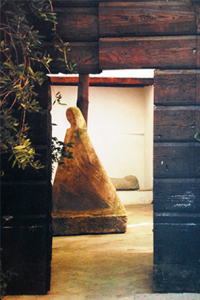
“So, this is it. But what is it? … something that would be hard to put in words but which gives one a feeling of necessity, which makes sense, like the form of a tree, like the shape of a mountain, like a musical phrase, like all those useless things that are so necessary.”
Anna Mahler
The film Anna Mahler ‘A Stone Figure’ follows the sculptor over a number of months from the delivery of the stone to the completion of a work called Reclining Women.
It was finished in 1954 in Indiana Limestone at her studio in Los Angeles. The film is narrated by Anna Mahler and accompanied by a recording of her playing Bach on piano.
Anna Mahler by Marina Mahler, 2010:
When my mother died it was as if ,for me, by some strange transference her skin had become the stone of her sculpture
The outer skin of stone rough or smooth of her stone figures… Perhaps it was a way of not losing her
But touching them was like touching her
Abstractly and physically remaining “in touch “
It only occurred to me now while writing it the real meaning of that phrase .
Growing up in the shade of her silence,
We spoke only in the kitchen in between her work bouts,
I learned to listen to it…. This absence of words And because of that could also see better.
The masses of her stone sculpture all around me in the large parking lot where she carved daily with hammer and chisel
Making the rythmic music of chipping..
Penetrated into my most innermost recesses
Life for me was unthinkable without these large heavy creatures whom I touched and climbed upon
And watched come into
Being day by day….
Amid the thousands of fallen chips and the heavy white dust
Chips and dust which trailed my mother into the house, the dust and a few chips following her into bed.
My mother began work each morning early around 7 am to avoid the hot California sun………
She came in then later to have what she called “second breakfast” with me in the kitchen at the little table for two where we so often
talked…
And not so often ate…
Eating was….
Improvised and was always of second importance Cooking was summary and always the same
It was a necessary pause in the day
But not much thought went into it
And no variety
You are what you eat was far from the mind What was important was what one
was reading, thinking planning…
We exchanged everything
All our thoughts
And natural…. Like a kind of punctuation to our day
But then we lapsed back into the silence which ruled the hours And the inner life .
Her work ethic was simple and consistent
All Morning she went between the driveway, her outdoor studio..,
And the small wooden table in the dining room where in total silence
she played solitaire to let the next move grow within her
To listen to it…
Before donning her sun goggles and mask and once more facing the sun becoming ever hotter as the hours vanished
Out and in
A rythm repeated over and over
Day out month long….
Year after year
Normally in six months a stone was finished
And as easily as turning a page in a book one is reading…….. She began chipping on yet another stone..
And life resumed it’s normalcy
And the tranquil eternal pattern continued
It is still continuing in me to this day It had that force…
And I remember everything… Remain… The figures Testimony to her daily life
Marina Mahler

Anna Mahler Sculpture (website)
The Human Figure in Art by Anna Mahler (text)
Anna Mahler, Her Work by Ernst Gombrich (text)
Address at the funeral of Anna Mahler by Ernst Gombrich (text)
On Via Brignone in the heart of the Centro Storico of Spoleto, an area which has become under-populated in recent years, are two artist studios which since 2010 have provided an inspiring backdrop for an international artist residency and projects programme. The studios were kept by Anna Mahler (1904-1988), sculptor daughter of Gustav and Alma, and conceptual artist Sol LeWitt (1928-2007).
They worked in these studios for over 30 years yet they never met each other: a testament to the towns conducive atmosphere for concentration and quiet, especially when considered in the context of the famous and bustling Festival Dei Due Mondi.
The residency programme was initiated by Marina Mahler, Anna’s daughter, under the auspices of the Anna Mahler Association. She invited David Gothard to Spoleto in 2009 to explore its creative opportunities. David found the Sol LeWitt studio next door to Anna’s and promptly reconnected with the family: During his Artistic Directorship at the Riverside Studios in the 80s, a time when the organisation was uniquely nominated for the Turner Prize, David had hosted the Lucinda Childs, Philip Glass, Sol LeWitt collaboration ’Dance’.
When not in Spoleto himself Sol, with his characteristic generosity, would give the keys of his studio to artist friends. Carol LeWitt, Sol’s wife, who has continued this tradition, offered the keys to David and soon artists invited by the Anna Mahler Association were working in both the Anna Mahler studio and the Sol LeWitt studio alongside artists invited by the LeWitt’s.
David’s encouragment of experimental and responsive experiences for artists, curators and writers, working within the historical and contemporary fabrics of Spoleto, has given the residency programme its special character, summed up in his phrase for nurturing creative thinking with ‘slow-cooking’.
Working with modest budgets the Anna Mahler Association residency programme has been informally run. Since 2012 Guy Robertson, who David had invited as a curator in 2010, has led the programme for the Anna Mahler Association. In 2014 the apartments adjoining the Mahler and LeWitt studios, which had accomodated visiting artists, came up for sale and Eva LeWitt, Sol’s daughter, secured them with the residency programme in mind. Now, whilst the families are genorously giving the use of the studio spaces and apartments, Guy and Eva are working to secure funding specifically for the residency programme itself under the new name of the Mahler and LeWitt Studios. Meanwhile the Anna Mahler Association continues to support ongoing projects.
Right: Anna Mahler, Emphasis
Bronze, 38x35x65 in., London 1966
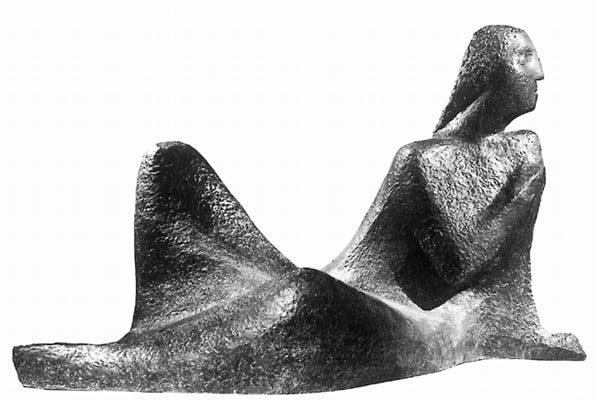
Anna Mahler, Tower of Masks
Indiana Limestone, Los Angeles, 1964/65
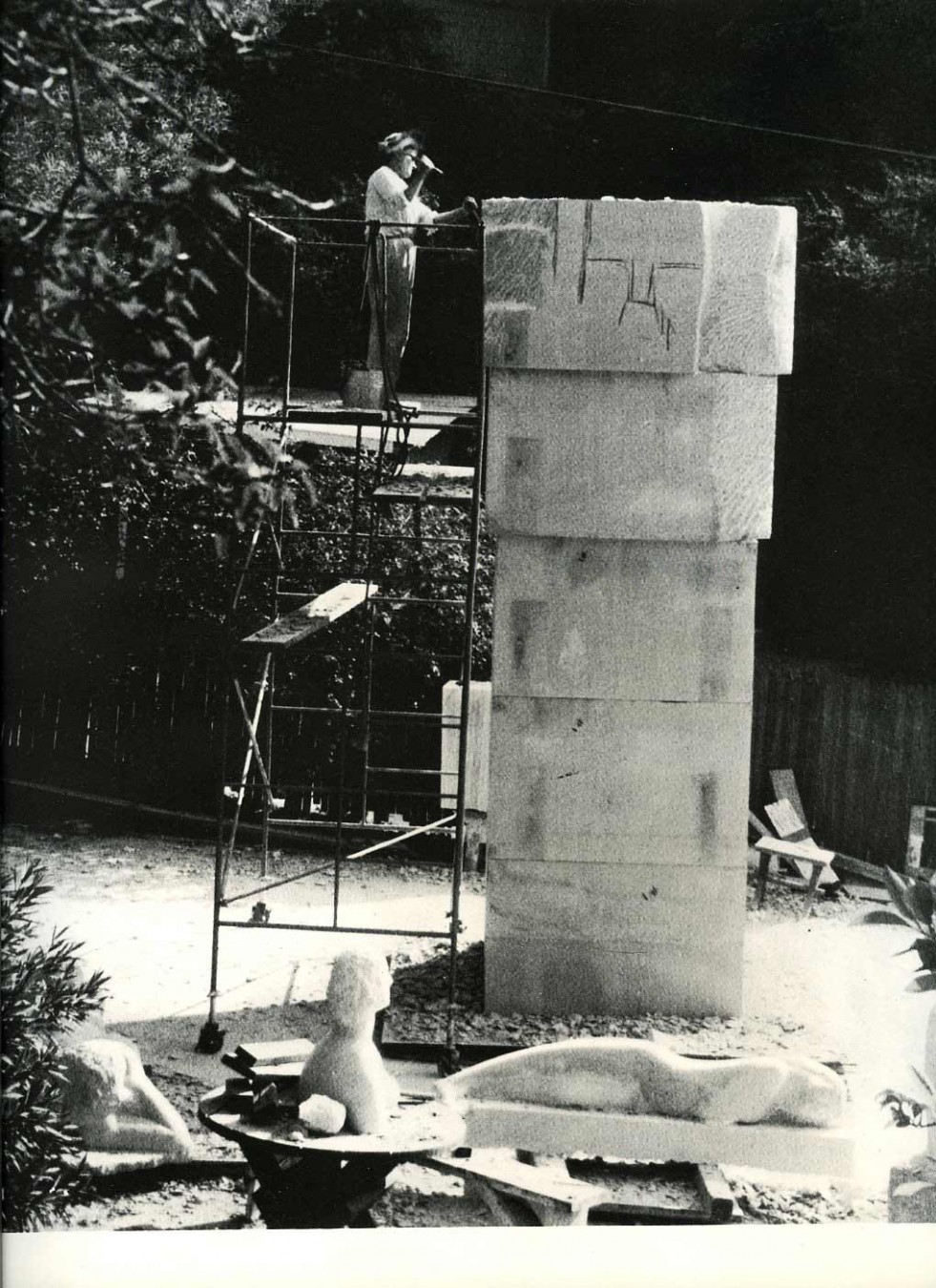
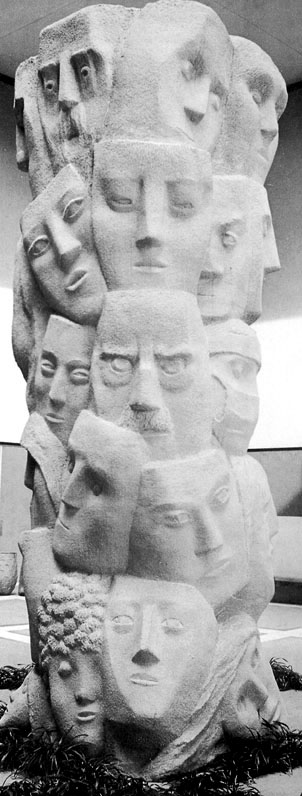
Left: Otto Klemperer, plaster, over life-size, London, 1947. Right: Arnold Schoenberg, plaster, under life-six, Los Angeles, 1951. Below: Gustav Mahler, plaster.

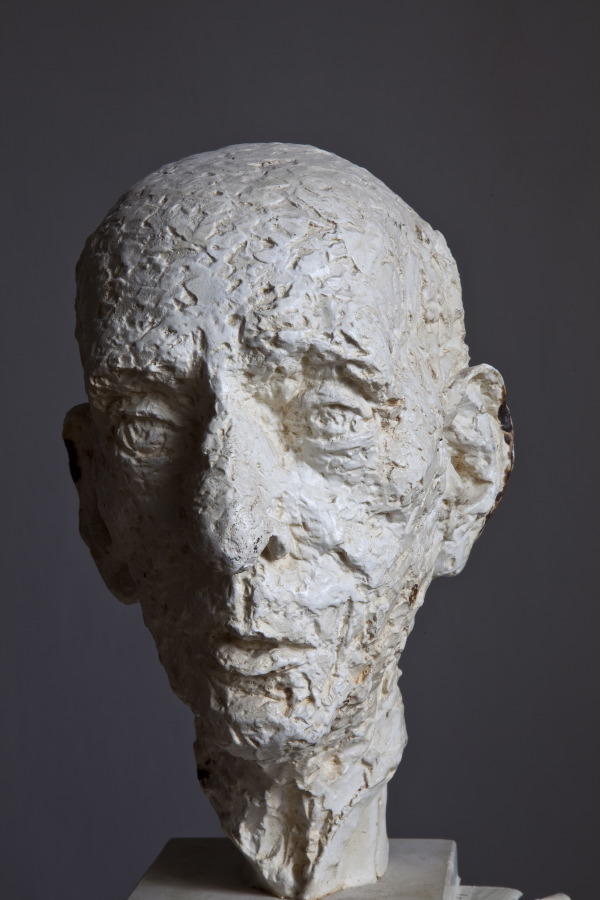
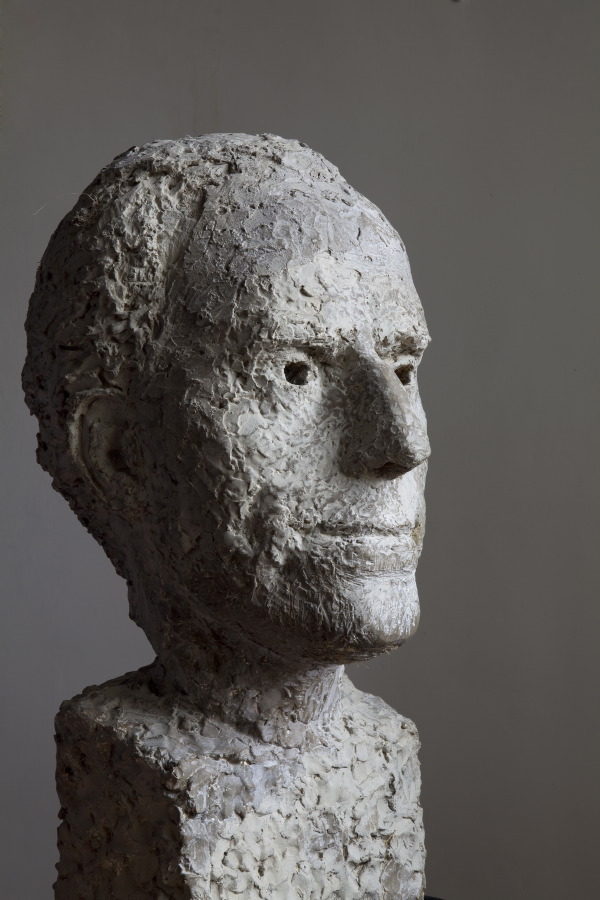
- News & Timeline
- January 2016 | James Capper and Matthew Burdis awards announced
- Summer 2015 | Launch of the Mahler & LeWitt Studios
- 01/01/15 | Mahler & LeWitt Studios | Start up funding for the new Spoleto residency programme
- 07/08/14 | Tim Smyth | Support of 'Al Assad Campaign' charity print for Syria Relief
- 02/02/14 | Tim Smyth | support for Defective Carrots publication with Bemojake
- 1/10/13| JocJonJosch | Worstward Ho! Performance & exhibition
- 21/09/13 | Tommaso Faraci |Exhibition, Cortile Via Brignone
- 21/09/13 | Francesco Marcolini | Exhibition, Cortile Via Brignone
- 20/08/13 | Florence Judd | Residency
- 20/08/13 | Tom Barnett | Residency
- 20/08/13 |Guy Gormley | Residency
- 15/06/13 | Michele Drascek | Residency
- 01/08/12 | Tom Lovelace | Residency
- 01/08/12 | Viktor Timofeev | Residency
- 03/08/12 | Andrzej Welminski | Exhibition at the Edinburgh Art Festival
- 02/06/12 | Guy Gormley | Jack Follow Publication
- 28/09/12 | Rob Sherwood | Exhibition 'Warp and the Weft', London
- 16/07/11 | JocJonJosch | 'Existere' performance
- 01/07/11 | Mary Garner | Residency
- 01/07/11 | Tim Smyth | Residency
- 01/07/11 | Andrzej & Teresa Welminski | Workshops, exhibition and performance
- 15/08/10 | Luca Bolognesi | Residency
- 15/08/10 | Joschi Herczeg | Residency
- 15/07/10 | Sam Belinfante | Residency
- 15/07/10 | Guy Robertson | Residency
- 1/07/10 | Rob Sherwood | Residency
- 1/04/10 | Daniel Kwiatkowski | Residency
